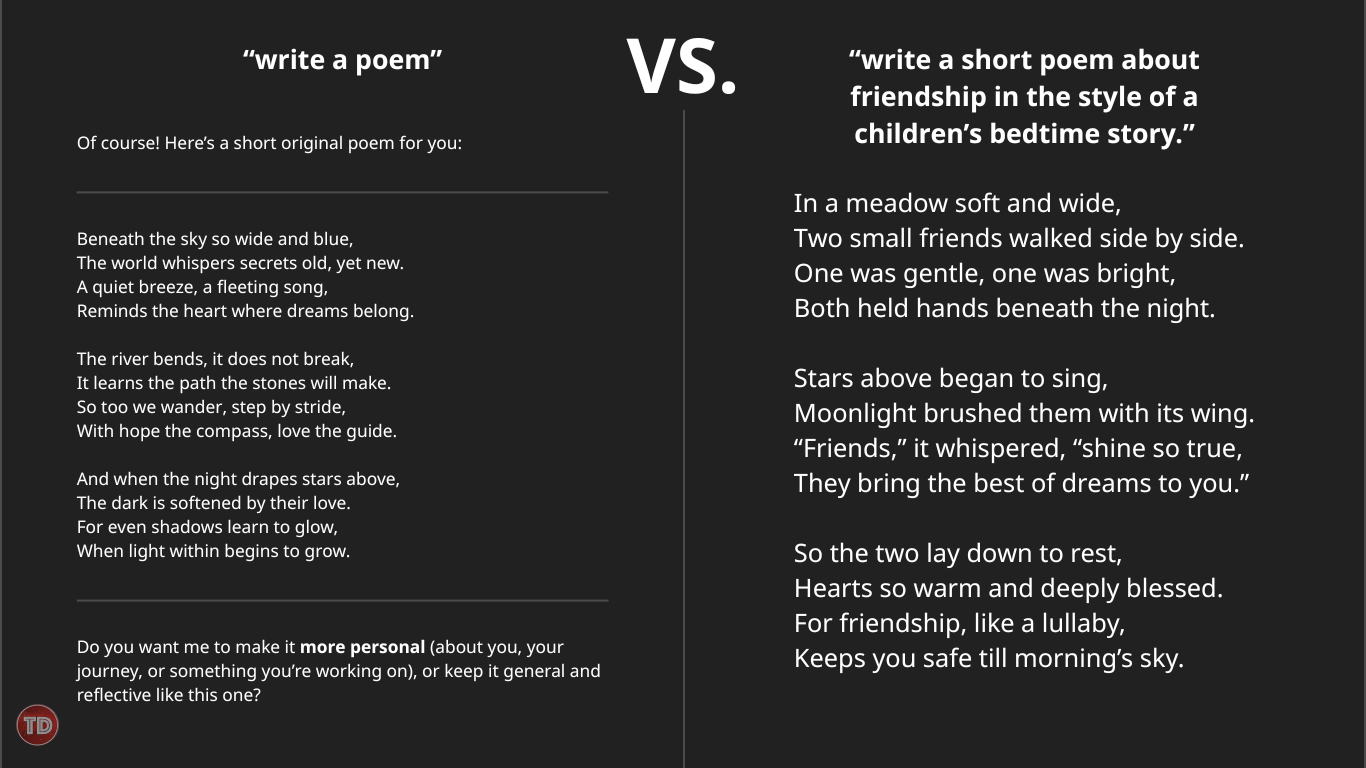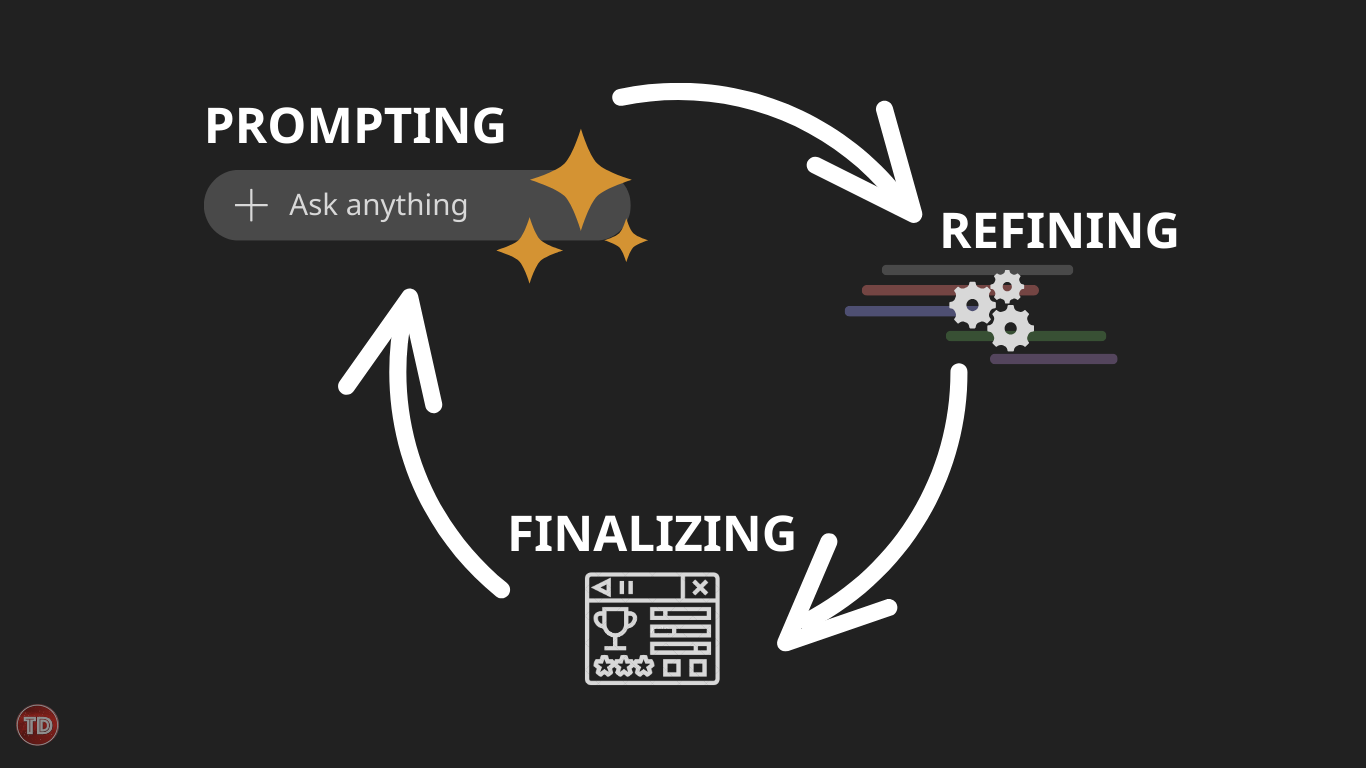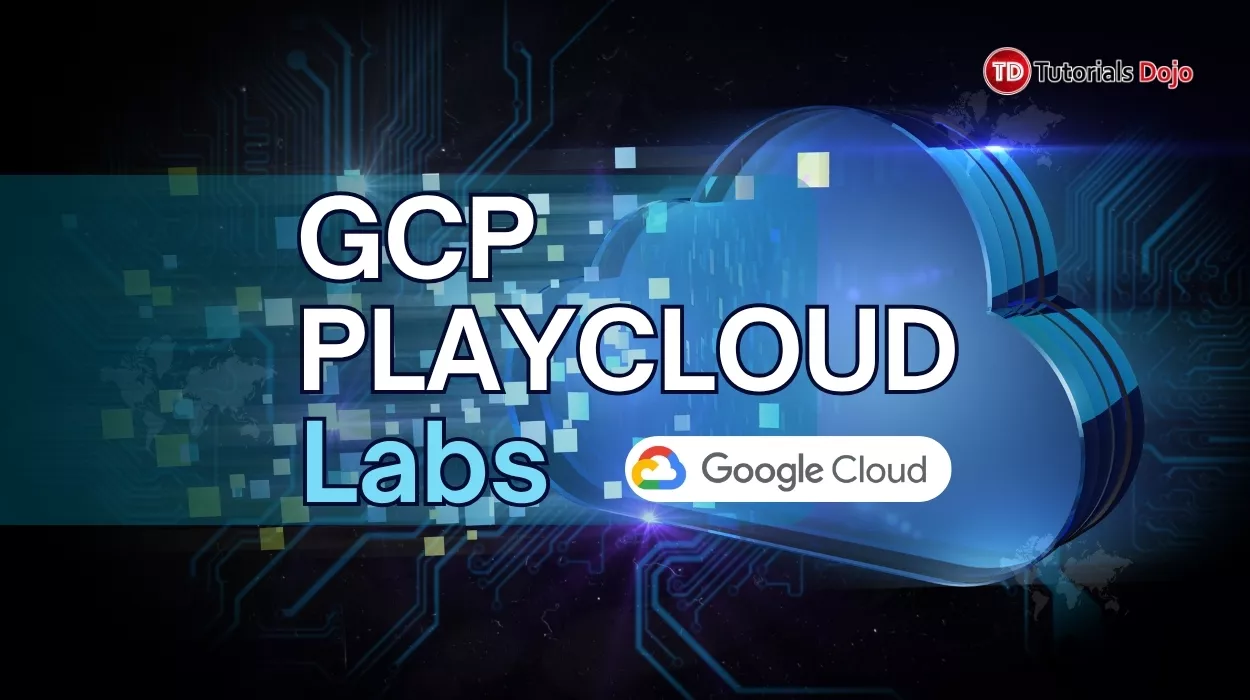Last updated on August 29, 2025
It all starts with a simple AI prompt. When you have an idea that you want to explore further, one of the easiest ways to keep the ball rolling is to turn that idea into a prompt for an AI tool. This helps clarify your vision, spark new directions, and provide a starting point you can build from. AI doesn’t magically finish your work for you, but it can set you up with a solid foundation that saves time and keeps your momentum going.
As an active volunteer in the Philippines’ tech community, I’ve been to numerous events and noticed a recurring theme: AI is everywhere. Whether it’s in panel discussions, workshops, or hallway conversations, people are talking about how AI is reshaping our lives and our work. The reactions usually fall into two cases, excitement and nervousness. Excited because AI can speed up tasks that used to take hours, but nervous because it can also make people overly dependent on it, or worse, replace parts of their skillset. The truth is, AI can’t replace everything. What it does best is accelerate the process. A single prompt can spark something big, but it’s human creativity, judgment, and execution that bring the final result into reality.
Ready to Enter a Prompt?
If you have an idea you want to visualize, the first step is simple: open an AI tool. It could be ChatGPT, Claude AI, Gemini, Lovable, or whichever tool you feel most comfortable using. Typing your idea into the prompt box feels like dropping a question into a well, you’re curious to see what echoes back. That curiosity is what fuels experimentation.
The first response you get is almost never perfect. It might be vague, generic, or completely miss the mark. But that’s not a failure, it’s part of the process. Each response teaches you something about how the AI interprets your words, and every tweak you make to your prompt gets you closer to the result you envisioned. Maybe you realize you need to be more specific, or maybe you see a new angle you hadn’t considered.
Think of the first output as a foundation. It gives you a starting point to work with. From there, you can build: a draft blog post, a chunk of code, a wireframe design, or even just a brainstorm list of ideas. What matters is that you’ve taken the idea out of your head and turned it into something you can react to, edit, and refine. The real magic of AI is not in that first draft but in how you decide to use it.
Elevate Your Results with Prompt Engineering
To get better output, you need better input. That’s where prompt engineering comes in, a growing discipline across both research and industry. Prompt engineering is about structuring prompts clearly and deliberately so they guide AI toward the response you need. It goes beyond basic commands by giving context, specifying format, and setting constraints.
Take, for example, a vague prompt like “Write a poem.” More often than not, you’ll receive a generic poem that misses your tone or intent. But a prompt like “Write a short poem about friendship in the style of a calming bedtime story.” provides context, tone, and structure, resulting in output that is much closer to what you envisioned.
This principle applies across fields. If you’re coding, a vague prompt like “write a Python script” will return something basic. But if you ask, “write a Python script that takes a CSV of student grades and outputs their average score with error handling for missing data,” you’ll get something much more useful. The same goes for design, writing, or business brainstorming, the clearer you are, the better the AI can support you.
There are advanced techniques such as zero-shot prompting, few-shot prompting, chain-of-thought prompting, prompt chaining, ReAct, and more. Methods which can drastically improve the quality and direction of AI outputs.
Prompt engineering doesn’t replace creativity. It simply guides it. You still need to edit, refine, and decide which parts to keep. But knowing how to structure a good prompt can save hours of back-and-forth, making you faster and more effective at turning ideas into real outcomes.
From Idea to Actual Progress
Once you’ve generated something useful, the real work begins: turning it into progress. AI can hand you a draft, but it’s your job to edit, reshape, and polish it. Some people call this stage “vibe coding” or “vibe drafting”, letting AI throw down a rough version so you can refine it into something practical.
For example, if you’re preparing for a pitch, AI can draft the slides or even suggest talking points. But you still need to adjust the tone, add your own data, and personalize it for your audience. If you’re coding, AI can generate a script to get you started, but you’ll have to test it, debug it, and integrate it with your existing systems. This stage is where human skill matters most.
Progress doesn’t happen all at once. It comes from small, consistent steps: refining a sentence, restructuring a piece of code, or adjusting a design element. With each iteration, your project moves closer to completion. AI gives you the momentum, but your judgment and effort push it forward. Without human involvement, the draft stays just that, a draft.
Going Back to AI to Fix Problems
AI isn’t just useful at the beginning of a project. It’s also a valuable collaborator when you run into roadblocks. Maybe your draft feels too flat, your code throws errors, or your design isn’t landing the way you hoped. Instead of starting over, you can feed those problems back into the AI and ask for help.
For example, you could say:
- “Here’s my current blog introduction. Suggest three stronger alternatives.”
- “This code gives me an index error. Can you explain why and suggest a fix?”
- “My design looks too cluttered. How can I simplify it while keeping the core idea?”
By treating AI as a partner in troubleshooting, you save time and explore solutions you might not have thought of on your own. The iterative loop of prompt → refine → prompt again creates better results with every cycle.
Of course, AI isn’t perfect. Sometimes it offers fixes that don’t work or suggestions that don’t align with your project. That’s why your own judgment is always the final filter. The key is knowing when to accept AI’s help and when to trust your own instincts or seek human feedback.
Returning to Your Initial Idea
Think back to that first spark (your original AI prompt). At this point, it has evolved into something tangible. What started as a vague idea might now be a published article, a working prototype, or a shareable design. AI didn’t do the work for you, but it accelerated the process and helped you focus on the parts that matter most.
The journey from idea to execution shows why humans are still essential. AI may create drafts at lightning speed, but only you can decide what’s worth keeping, what needs adjusting, and what’s ready to ship. The result is a collaboration where AI accelerates the early stages, and humans ensure the final product is polished, functional, and meaningful.
This cycle, prompting, refining, iterating, and finalizing, can turn small sparks of curiosity into projects you can actually use and share. It’s proof that AI is not replacing creativity; it’s multiplying it.
Give Yourself a Headstart With a Prompt
AI prompts are powerful, but they’re not finished products. They’re starting points. A single prompt can help you take the ideas in your head and turn them into something visible and actionable. Whether it’s a blog draft, a piece of code, a design concept, or a business idea, AI can help you move from thought to execution much faster than working alone.
But speed is only part of the story. Every time you refine an AI output, you’re not just improving the project, you’re also improving yourself. You learn more about how the AI interprets your words. You learn how to troubleshoot, how to clarify your intentions, and how to push your own creative limits. This growth is just as valuable as the finished product.
The important thing to remember is that AI prompts won’t do everything for you. It won’t know your audience the way you do. It won’t understand your goals or the context of your project unless you explain it clearly. That’s why human judgment and creativity remain at the center of the process.
So where does that leave us? In a space of opportunity. AI gives you the spark, but you hold the fire. The future belongs to those who can balance both, using AI to accelerate progress while bringing their own skills, perspective, and execution to the table.
If you’re curious about what this looks like in practice, don’t wait. Open your favorite AI tool today, type in one small idea, and see where it takes you. That single prompt could be the start of your next big project.



















